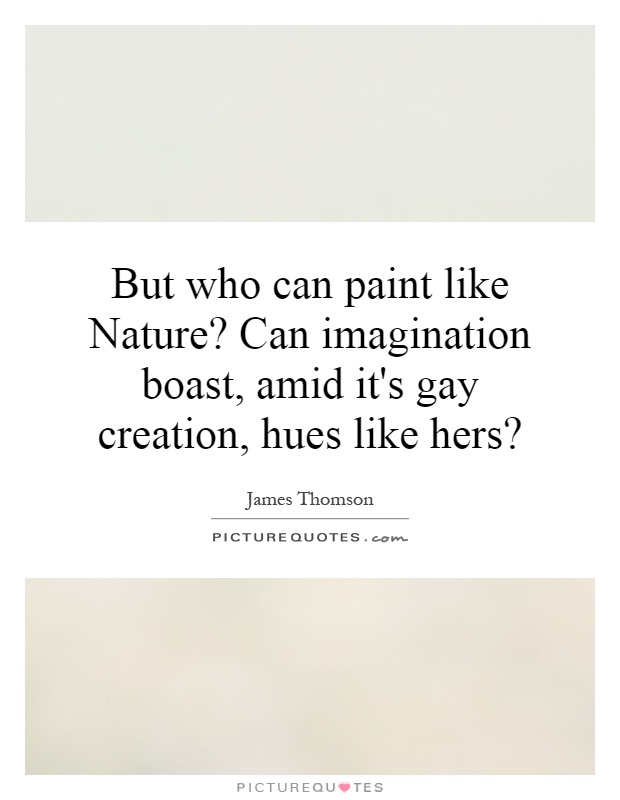But who can paint like Nature? Can imagination boast, amid it's gay creation, hues like hers?

But who can paint like Nature? Can imagination boast, amid it's gay creation, hues like hers?
James Thomson, a Scottish poet known for his descriptive and vivid nature poetry, often pondered the beauty and wonder of the natural world in his works. In his famous poem "The Seasons," Thomson explores the splendor of the changing seasons and the intricate details of the natural world. One of the recurring themes in his poetry is the idea that no artist can truly capture the beauty of nature in all its glory.In the line "But who can paint like Nature? Can imagination boast, amid it's gay creation, hues like hers?" Thomson reflects on the unmatched beauty and creativity of nature. He suggests that no human artist, no matter how talented or imaginative, can replicate the vibrant colors and intricate details found in the natural world. Nature's palette is vast and varied, with hues that range from the soft pastels of a sunrise to the bold and vibrant colors of a sunset.
Thomson's admiration for nature's beauty is evident in his poetry, as he often uses vivid imagery and descriptive language to bring the natural world to life on the page. He celebrates the changing seasons, the lush landscapes, and the diverse flora and fauna that populate the earth. Through his poetry, Thomson invites readers to marvel at the wonders of nature and to appreciate the beauty that surrounds us every day.
In a world where technology and urbanization often disconnect us from the natural world, Thomson's poetry serves as a reminder of the importance of reconnecting with nature and appreciating its beauty. He reminds us that no matter how advanced our society becomes, we can never truly replicate the beauty and wonder of the natural world. Nature's creations are unique and irreplaceable, and it is up to us to cherish and protect them for future generations to enjoy.












 Friendship Quotes
Friendship Quotes Love Quotes
Love Quotes Life Quotes
Life Quotes Funny Quotes
Funny Quotes Motivational Quotes
Motivational Quotes Inspirational Quotes
Inspirational Quotes